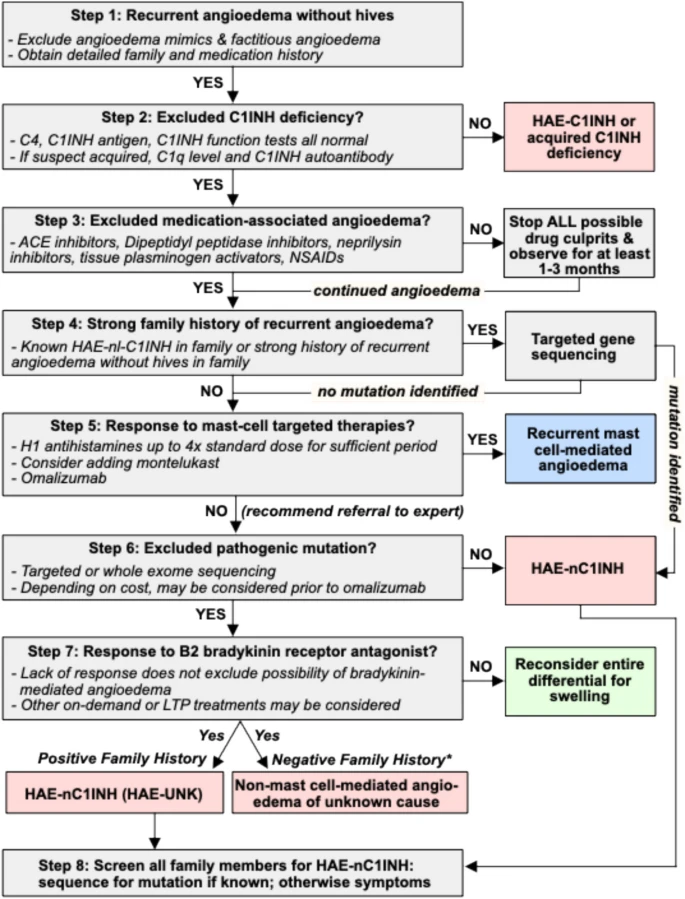Zuraw, B.L., Bork, K., Bouillet, L. et al. Clinic Rev Allerg Immunol 68, 24 (2025). https://doi.org/10.1007/s12016-025-09027-4
Abstract
Hereditary angioedema (HAE) has been recognized for almost 150 years. The newest form of HAE, where C1 inhibitor levels are normal (HAE-nC1INH), was first described in 2000. Over the last two decades, new types of apparent non-mast cell–mediated angioedema with normal quantity and activity of C1INH have been described, in some cases with proven genetic pathogenic variants that co-segregate with angioedema expression within families. Like HAE due to C1INH deficiency, HAE-nC1INH patients are at risk of serious morbidity and mortality. Therefore, proactive management and treatment of HAE-nC1INH patients after an expert physician diagnosis is critically important. The underlying pathophysiology responsible for the angioedema has also been clarified in some of the HAE-nC1INH types. While several clinical guidelines and practice parameters including HAE-nC1INH have been published, we have made substantial progress in our understanding encompassing diagnostic criteria, pathophysiology, and treatment outcomes. HAE International (HAEi) and the US HAE Association (HAEA) convened a symposium of global HAE-nC1INH experts to synthesize our current knowledge in the area. Given the paucity of high-level evidence in HAE-nC1INH, all recommendations are based on expert opinion. This review and expert opinion on the best practice approach to diagnosing and treating HAE-nC1INH will support physicians to better manage patients with HAE-nC1INH.


No comments:
Post a Comment